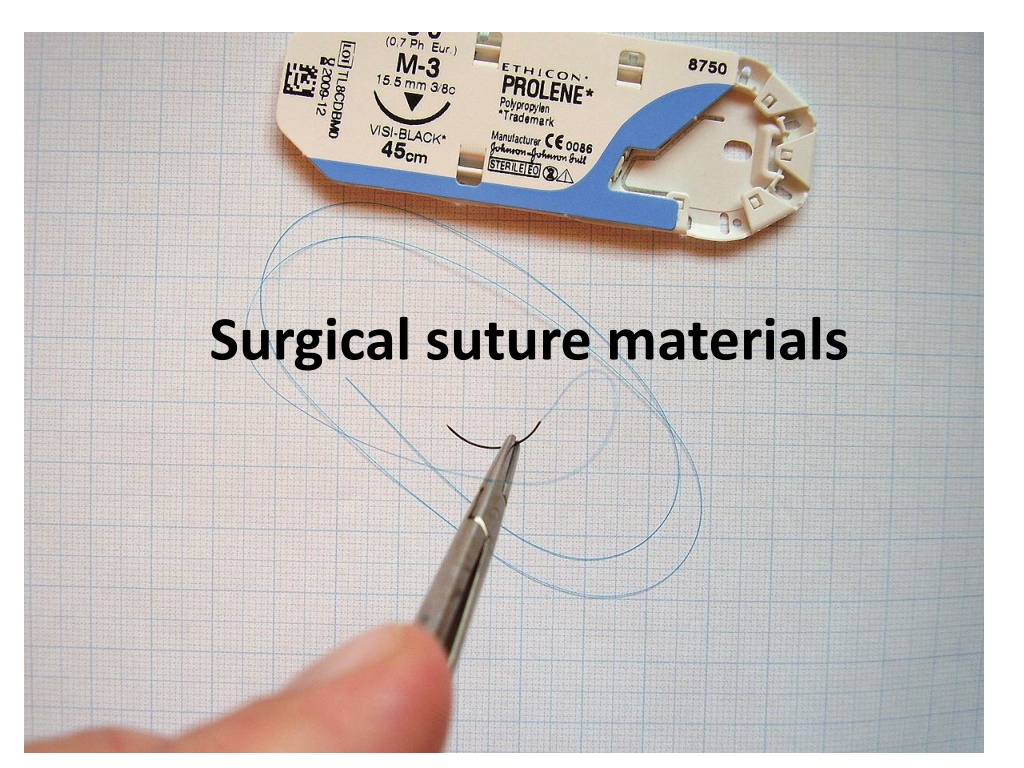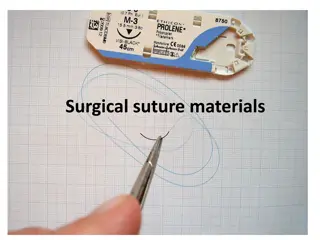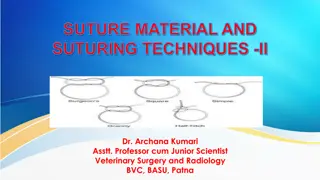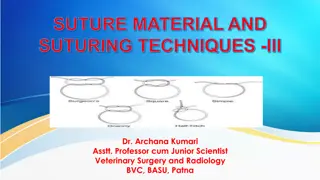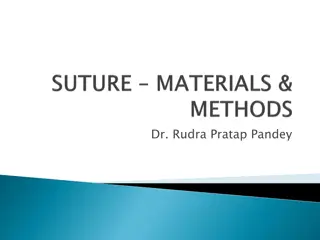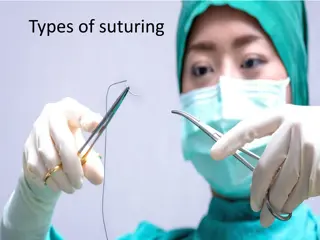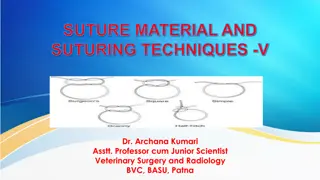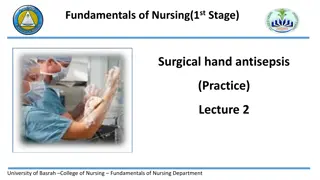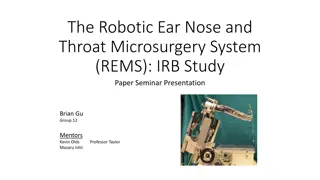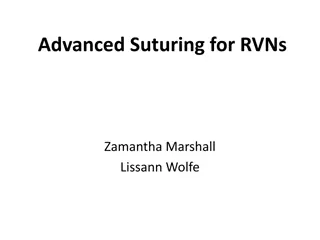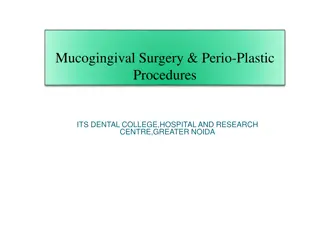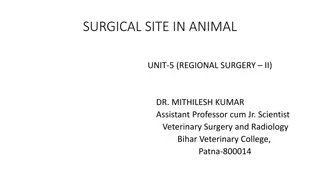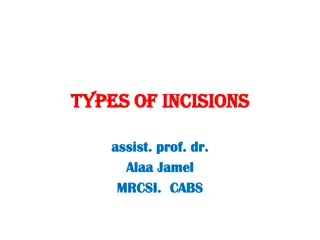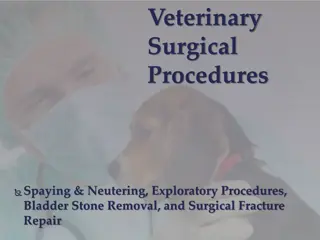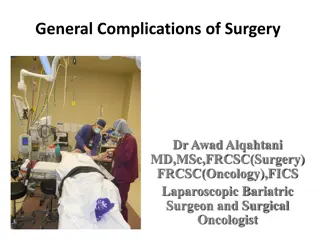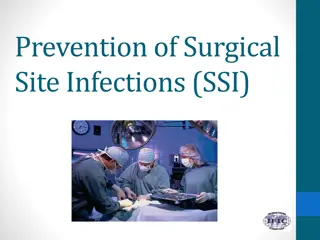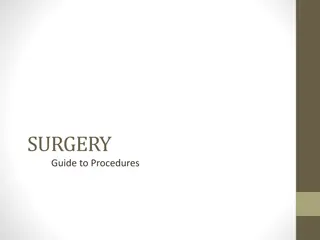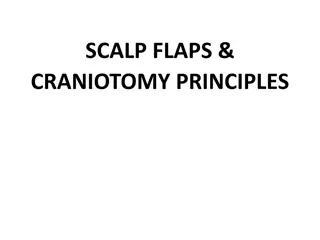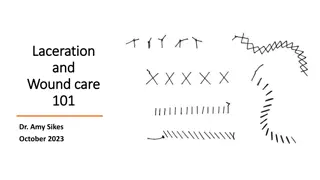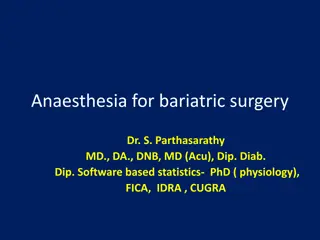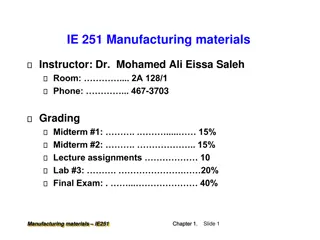Understanding Surgical Suture Materials and Techniques
Surgical sutures play a crucial role in wound repair by providing support and hemostasis to healing tissue. An ideal suture should meet specific criteria for handling, reaction in tissue, bacterial growth inhibition, knot security, and more. Factors like suture size, flexibility, and surface characteristics impact their effectiveness in different tissue types. Surgeons must choose sutures that closely approximate the ideal for each procedure and tissue to be sutured.
Download Presentation

Please find below an Image/Link to download the presentation.
The content on the website is provided AS IS for your information and personal use only. It may not be sold, licensed, or shared on other websites without obtaining consent from the author. Download presentation by click this link. If you encounter any issues during the download, it is possible that the publisher has removed the file from their server.
E N D
Presentation Transcript
Surgical suture materials Sutures and needles
Sutures Suture plays an important role in wound repair by providing hemostasis and support for healing tissue. Tissues have different requirements for suture support, depending on the type of tissue and anticipated duration of healing. Some tissues need support for only a few days (e.g., muscle, subcutaneous tissue, require weeks (fascia) or months (tendon) to heal. skin), whereas others
an ideal suture is one that will lose its tensile strength at a rate similar to that with which the tissue gains strength, and it will be absorbed by the tissue so that no foreign material remains in the wound.
The ideal suture is Easy to handle, Reacts minimally in tissue, Inhibits bacterial growth, Holds securely when knotted, Resists shrinking in tissue, Absorbs with minimal reaction after the tissue has healed, Is noncapillary, nonallergenic, noncarcinogenic, and nonferromagnetic but such a material does not exist. Therefore, surgeons must choose a suture that most closely approximates the ideal for a given procedure and tissue to be sutured.
Suture size. The smallest diameter suture that will adequately secure wounded tissue should be used in order to 1. minimize trauma as the suture is passed through the tissue and 2. to reduce the amount of foreign material left in the wound. The most commonly used standard for suture size is the United States Pharmacopeia (USP), which denotes dimensions from fine to coarse (with diameters in inches) according to a numeric scale, with 12-0 being the smallest and 7 the largest.
Flexibility. It is determined by its torsional stiffness and diameter which influence its handling and use. Nylon and surgical gut are relatively stiff compared with silk suture; braided polyester sutures have intermediate stiffness.
Surface characteristics and coating. The surface characteristics (the amount of friction or drag ) and the amount of trauma caused. Smooth surfaces are particularly important in delicate tissues, such as the eye. However, sutures with smooth surfaces also require greater tension to ensure good apposition of tissues and have less knot security Braided materials have more drag than monofilament sutures
Capillarity. Capillarity is the process by which fluid and bacteria are carried into the interstices of multifilament fibers. Because neutrophils and macrophages are too large to enter the interstices of the fiber, infection may persist, particularly in nonabsorbable sutures. All braided materials (e.g., polyglycolic acid, silk) have degrees of capillarity, whereas monofilament sutures are considered noncapillary. Coating reduces the capillarity of some sutures, but regardless, capillary suture materials should not be used in contaminated or infected sites.
Knot tensile strength. Sutures should be as strong as the normal tissue; however, the tensile strength of the suture should not greatly exceed the tensile strength of the tissue.
Relative knot security. Relative knot security is the holding capacity of a suture
Specific Suturing Materials Suture materials may be classified according to 1. their behavior in tissue (absorbable or nonabsorbable), 2. their structure (monofilament or multifilament), or 3. their origin (synthetic, organic, or metallic)
Two major mechanisms of absorption result in the degradation of absorbable sutures. 1. Sutures of organic origin, such as surgical gut, are gradually digested by tissue enzymes and phagocytized, 2. sutures manufactured from synthetic polymers are principally broken down by hydrolysis. Nonabsorbable sutures are ultimately encapsulated or walled off by fibrous tissue.
Absorbable Suture Materials lose most of their tensile strength within 60 days and eventually disappear from the tissue implantation site because they have been phagocytized or hydrolyzed.
Organic absorbable materials. Catgut (surgical gut) is the most common nonsynthetic absorbable suture material. Although once very popular, its use has decreased substantially in veterinary medicine with the appearance of strong monofilament synthetic absorbable suture materials. The word catgut is derived from the term kitgut or kitstring (the string used on a kit, or fiddle). Misinterpretation of the word kit as referring to a young cat led to the use of the term catgut.
Catgut (surgical gut) Surgical gut is in fact made from the submucosa of sheep intestine or the serosa of bovine intestine and is approximately 90% collagen. It is broken down by phagocytosis and, in contrast with other suture materials, results a notable inflammatory reaction. Surgical gut is available as plain, medium chromic, or chromic; increased tanning generally implies prolonged strength and reduced tissue reaction. Surgical gut is rapidly removed from infected sites or areas where it is exposed to digestive enzymes and is quickly degraded in catabolic patients. The knots may loosen when wet.
Synthetic absorbable materials. Synthetic absorbable materials generally are broken down by hydrolysis and cause minimal tissue reaction. The time to loss of strength and to absorption is fairly constant even in different tissue.
Monofilament absorbable materials. Polydioxanone and polyglyconate are classic monofilament sutures that keep their tensile strength longer than multifilament sutures with complete absorption occurring in 6 months. Poliglecaprone 25 and glycomer 631 are relatively new monofilament rapidly absorbable synthetic materials that are pliable, lack stiffness, and have good handling characteristics.
Multifilament absorbable materials. Polyglycolic acid is braided from filaments extracted from glycolic acid and is available in both coated and uncoated forms. Polyglactin 910 its rate of loss of tensile strength is similar to that of polyglycolic acid. Polysorb is a new . Polysorb has good initial tensile strength and is completely absorbed by 60 days. Vicryl Rapide is a relatively new, rapidly absorbed, it is completely absorbed in 42 days. This suture is indicated for superficial closure of mucosa, gingival closure, and periocular skin closure. Vicryl Plus is a new suture that was designed to reduce bacterial colonization on the suture. It has been coated with an antibacterial agent, triclosan.
Nonabsorbable Suture Materials Organic nonabsorbable materials. Silk is the most common organic nonabsorbable suture material used. It is a braided multifilament suture made by a special type of silkworm and is marketed as uncoated or coated. Silk has excellent handling characteristics and often is used in cardiovascular procedures. It should also be avoided in contaminated sites
Synthetic nonabsorbable materials. Synthetic nonabsorbable suture materials are marketed as 1. braided multifilament threads (e.g., polyester or coated caprolactam) or 2. monofilament threads (e.g., polypropylene, olyamide, or polybutester). These sutures are typically strong and induce minimal tissue reaction.
Metallic sutures. Stainless steel is the metallic suture most commonly used and is available as a monofilament or multifilament twisted wire. Surgical steel is strong with minimal tissue reaction, but knot ends evoke an inflammatory reaction. Stainless steel has a tendency to cut tissue. It is stable in contaminated wounds and is the standard for judging knot security and tissue reaction to suture materials.
